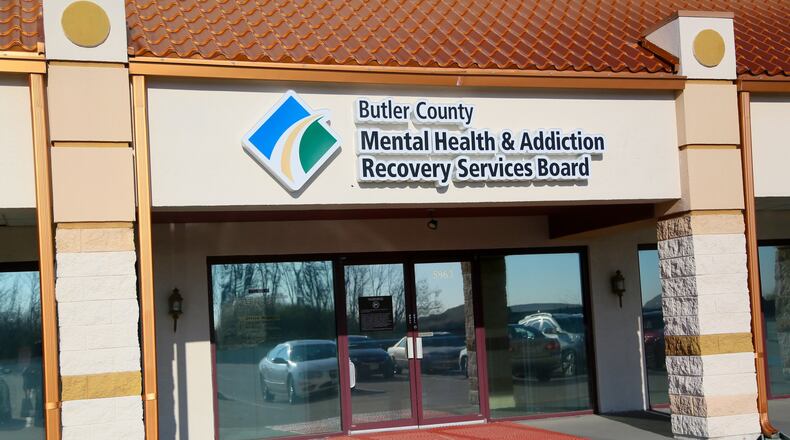The county commissioners are contributing the former Care Facility and $3 million in American Rescue Plan Act funds to the project. Rasmus told the Journal-News the ARPA money should cover renovation — estimated at $1 million — and some start-up costs, but the annual operations are estimated at $7 million, “depending on usage levels and community support.”
“The board does have some operational funds to help start the facility up, too,” Rasmus said. “But then we’re targeting new levy funds potentially to support the operation long term. We’re looking at next year, maybe March.”
Officials countywide have talked about the center for years, and Rasmus conducted two rounds of eight focus group meetings. Attendees were from a wide swath of the community including police, judges, clergy, doctors, elected officials, about 80 to100, all tolled.
He has also studied five models, two in North Carolina, two in Ohio and one in Oregon. He based the $7 million estimate on those models.
Commissioner Cindy Carpenter traveled with Rasmus to tour the two crisis units in North Carolina last year, one in Durham County that costs $7 to $8 million a year to run and another smaller one in the city of Henderson that costs $3 million to $3.5 million annually. The Durham County facility serves about 250 people a month and they are similar in size to Butler County.
The plan here is to use a section of the former nursing home for the 24/7 emergency, specialized care facility and start with 10 observation chairs and 10 private rooms to offer “a continuum of care for non-violent individuals experiencing a serious and immediate mental health need.”
Although MHARS is an independent board, the county commissioners must sanction asking voters for money. It is unclear whether the board would need to levy the entire operational amount. The board already has two levies that garner around $10.4 million and receive around $8 million in state and federal funding. Expenses were listed at $16.8 million in the 2022 annual report.
Mike Stein, the auditor’s office real estate director, told the Journal-News since property values are still being finalized — the median value hike is 37% — an exact cost to taxpayers isn’t yet available. However, “7 mills of tax on a $100,000 home will always cost about $245 per year.”
Carpenter told the Journal-News she believes Rasmus can trim the cost estimate.
“I don’t think it’s going to be that high,” she said.
“I hope he can adjust his numbers, we know there are a lot of agencies with their hand out right now,” she said. “And there is a lot of the system that needs improving, I need to make a decision after I see all those numbers, but of course I lean toward supporting what we need for assisting individuals with mental health issues.”
Commissioner Don Dixon told the Journal-News he is glad the MHARS board is holding feedback forums because if there isn’t community support the question of a new tax levy is moot.
“It would have be totally supported by the communities, number one and number two it would have to be determined that the services provided there have a benefit at the end of the day with the additional money,” Dixon said. “I don’t know, I have to hear the whole plan and see the community’s reaction, I want to see the extra $7 million benefit.”
Rasmus told the Journal-News suicides are rising, drug overdoses are resurging and COVID-19 is still spreading its ill effects even three years out. He said they took a poll in May of 600 voters and “across the county 70% indicated they recognized or agreed with the need for this facility.”
None of the commissioners have said they have made up their minds on a levy, but the cost is worrisome, especially with higher taxes on the horizon because of state-ordered astronomical property value hikes.
“At a $7 million figure I don’t know whether we would have the payback for that amount,” Commissioner T.C. Rogers said. “It’s hard to say this is the time to raise taxes for another service.”
About the Author

